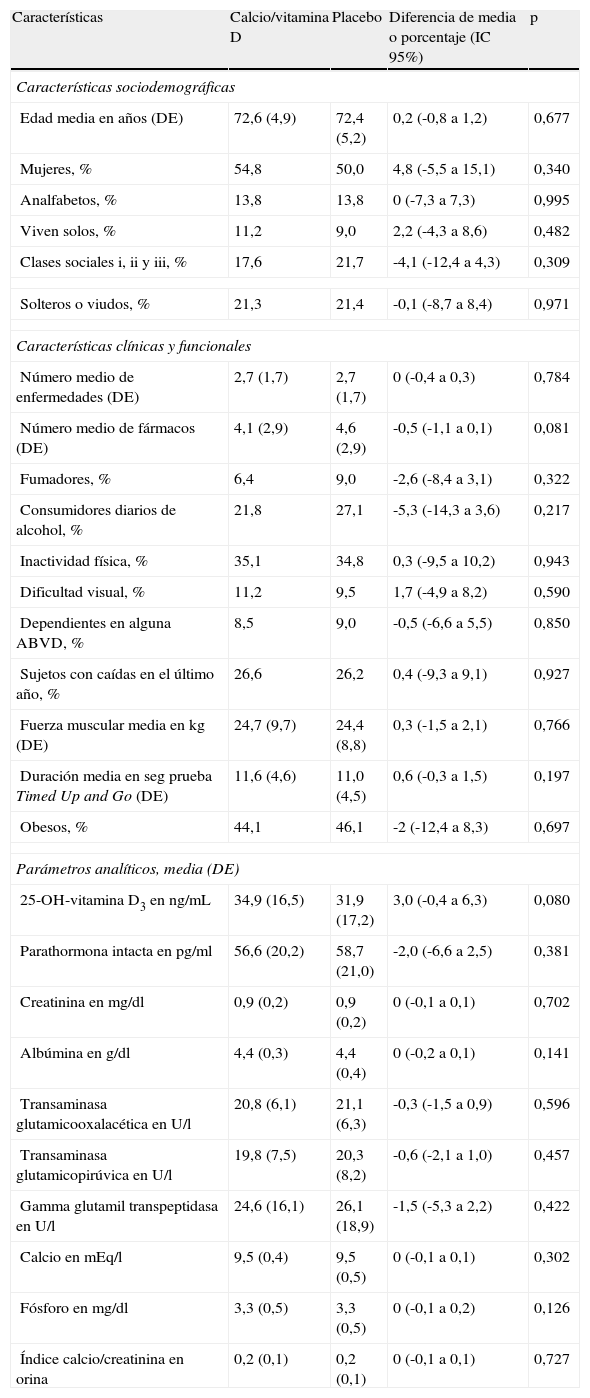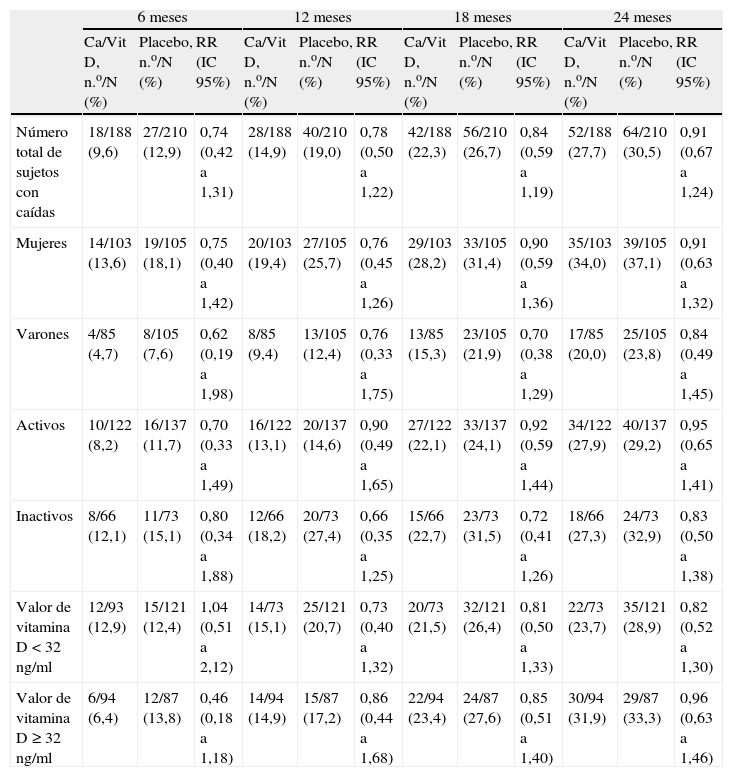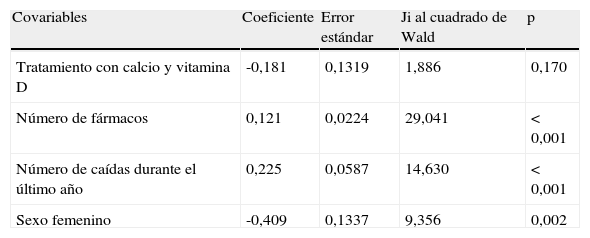Los suplementos de calcio y vitamina D (Ca/VitD) podrían ayudar a prevenir caídas, pero se desconoce si el efecto difiere según el nivel de actividad física o el nivel basal de 25-OH-vitamina D3. El objetivo es determinar el efecto del aporte de Ca/VitD en la reducción de caídas y en la función musculoesquelética de sujetos mayores de 65 años que viven en la comunidad y no presentan osteoporosis ni deficiencia de vitamina D.
Material y métodoEnsayo clínico aleatorizado, doble ciego, en el que 508 pacientes, seleccionados en 35 consultas de Medicina de Familia, otorgaron su consentimiento, iniciando tratamiento 398 (Ca/VitD 188 y placebo 210). Los parámetros de eficacia fueron: incidencia de caídas, cambios en la fuerza muscular en la mano dominante y cambios en la función musculoesquelética.
ResultadosLa incidencia acumulada de caídas en el grupo Ca/VitD fue del 27,7% (intervalo de confianza del 95% [IC 95%] 21,0-34,3) y en el grupo placebo del 30,5% (IC 95% 24,0-36,9) (p=0,537). La diferencia no fue significativa en el análisis por subgrupos: varones/mujeres, activos/no activos físicamente y valor de 25-OH-vitamina D3 superior/inferior a 32ng/ml. Tampoco hubo diferencia en la fuerza muscular de los sujetos de ambos grupos. La proporción con acontecimientos adversos fue superior en el grupo Ca/VitD (14,4 frente a 7,1%, p=0,019).
ConclusionesLos resultados contradicen la recomendación de aportar suplementos, no siendo una estrategia efectiva ni bien tolerada. Aunque podrían reducir el riesgo de caídas en valores muy bajos de vitamina D, los resultados son insatisfactorios cuando los mayores no presentan deficiencia de esta, debiéndose considerar la posibilidad de acontecimientos adversos.
Supplements of calcium and vitamin D (Ca/VitD) could help prevent falls, although it is unknown whether the effect differs according to the level of physical activity or baseline 25-OH-vitamin D3. The objective is to determine the effect of Ca/VitD supplements in reducing falls and the musculoskeletal function in elderly over 65 years living in the community, who do not have osteoporosis or vitamin D deficiency.
Material and methodRandomized double-blinded clinical trial. A total of 508 patients were selected from 35 Family Medicine consultations. The treatment was administered to 398 subjects (Ca/VitD 188 and placebo 210). The efficacy parameters were: incidence of falls, changes in muscle strength in dominant hand and changes in musculoskeletal function.
ResultsThe cumulative incidence of falls in the group Ca/VitD was 27.7% (95% confidence interval [95% CI]: 21.0 to 34.3) and 30.5% in the placebo group (95% CI: 24.0 to 36.9) (P=.537). The difference was not significant in the subgroup analysis: male/female, active/inactive physically and level of 25-OH-vitamin D3 higher/less than 32ng/ml. There was no difference in muscle strength in subjects of both groups. The proportion of adverse effects was higher in the Ca/VitD group (14.4 versus 7.1%, P=.019).
ConclusionsThe results contradict the recommendation to provide supplements, and it is not an effective and well tolerated strategy. Although they may reduce the risk of falls when there are very low levels of vitamin D, the results are unsatisfactory when elders do not have this deficiency, and it is necessary to consider the possibility of adverse effects.














